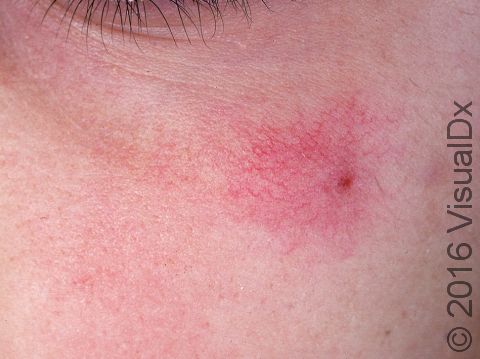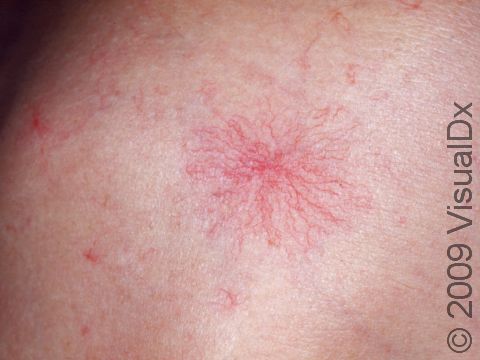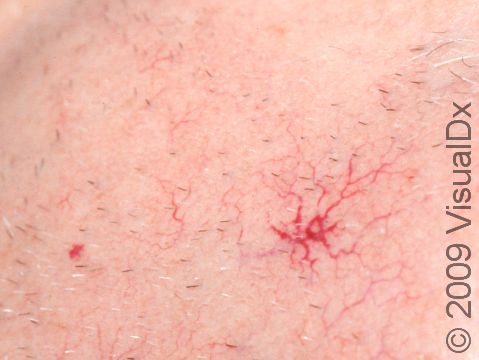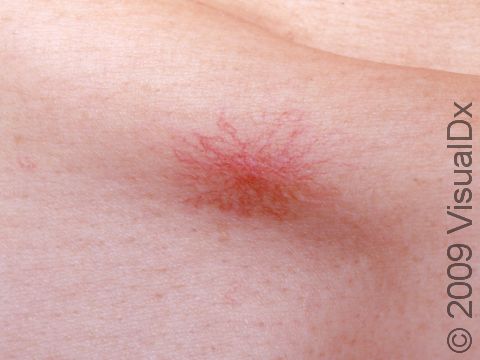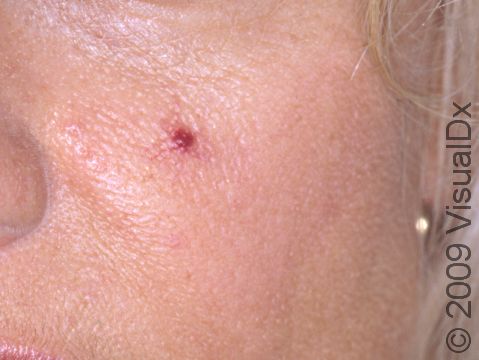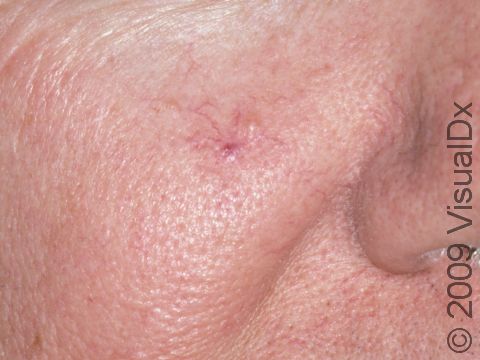Spider Angioma
A spider angioma is a grouping of small blood vessels at the skin surface. The pattern sometimes resembles the threads of a spider’s web.
Who's At Risk?
Spider angiomas are common in both children and adults. They appear more frequently during pregnancy, in people on birth control pills, or in people with liver disease.
Signs & Symptoms
Spider angiomas are most often seen on the face or trunk, and they also may be seen on the hands, forearms, and ears. There may be one spider angioma or several. Each one is a small (1–10 mm) area of redness, which disappears with direct finger pressure but rapidly returns when the pressure is released. There is often a central red dot and small red lines radiating out from the center.
Self-Care Guidelines
Spider angiomas may disappear as children get older, and women who are pregnant or on birth control pills may see improvement after they are no longer affected by hormones, but they usually are long lasting in adults.
No self-care treatment is needed, unless desired for the cosmetic appearance.
Treatments
- If the lesion is cosmetically bothersome, it can usually be removed with burning (electrocautery) or laser treatments.
- If you might have a liver problem, blood tests will be done.
Visit Urgency
- See your doctor if the area bleeds repeatedly or begins to grow in size or change in color.
- If you suddenly develop many lesions, tell your physician.
- If you have any sign or particular risk of liver disease (such as yellow skin color, swollen belly, or a history of heavy alcohol use), seek medical care.
Trusted Links
References
Bolognia, Jean L., ed. Dermatology, pp.721, 1656, 2157. New York: Mosby, 2003.
Freedberg, Irwin M., ed. Fitzpatrick’s Dermatology in General Medicine. 6th ed. pp.1003, 1013-1014, 2502. New York: McGraw-Hill, 2003.
Last modified on October 5th, 2022 at 7:59 pm

Not sure what to look for?
Try our new Rash and Skin Condition Finder
